Vision FK, the world’s first high‒performance eco‒friendly hydrogen electric vehicle
- Hyundai Motor Group
- 2021.09.07
- 분량7min
- 조회수 1,717Views
The “Vision FK”, unveiled by Hyundai Motor Group at Hydrogen Wave, is the world’s first high-performance hydrogen fuel cell electric vehicle that combines an eco-friendly hydrogen fuel cell system and a PE system for electric vehicles. We have looked into the innovative technology featured by the Vision FK and its impact on future mobility.
The automobile market is rapidly shifting from internal combustion engine vehicles to eco-friendly vehicles such as electric vehicles and hydrogen fuel cell vehicles. We’re not just talking about market share or sales volume. High-performance, eco-friendly vehicles are appearing one after another in even the high-performance automobile market, which was once considered only to be for internal combustion engine vehicles.
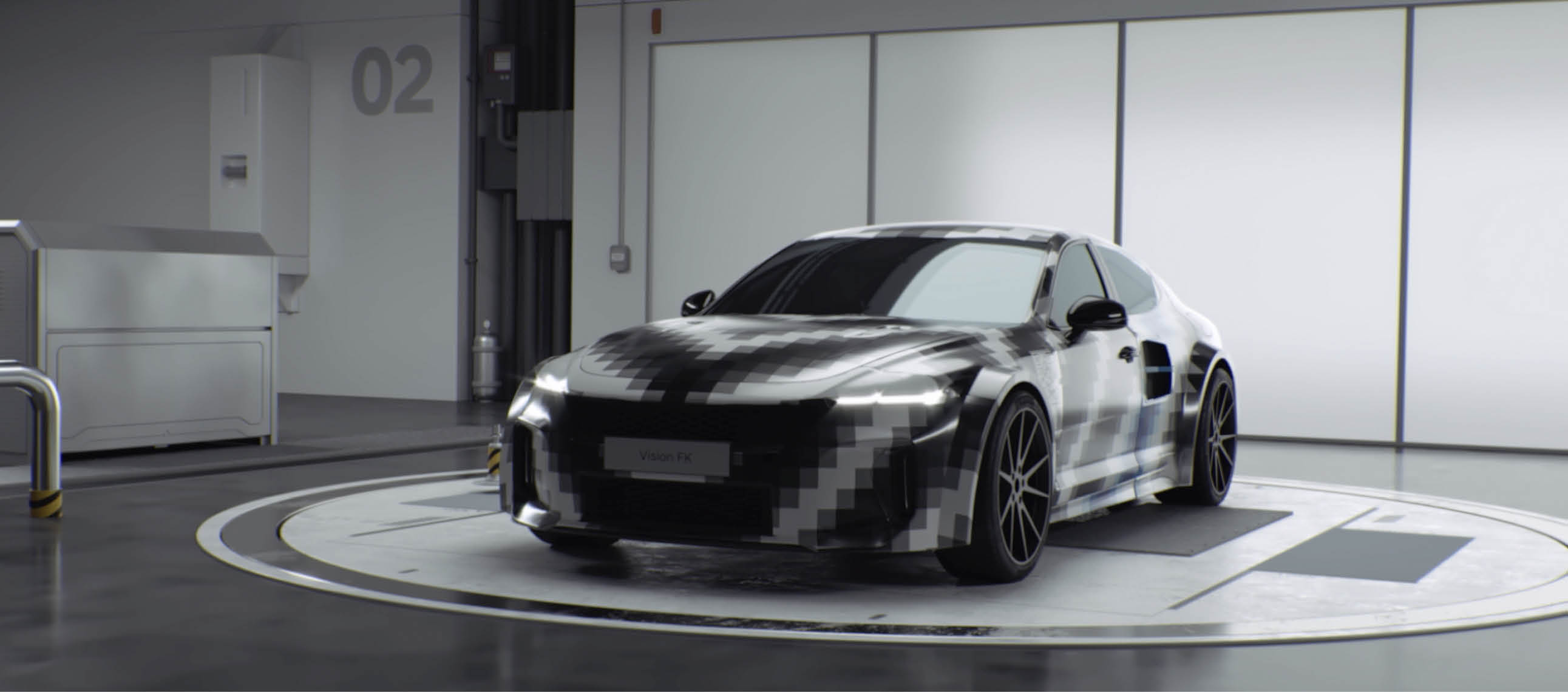
Many models with electric motors already exist in the high-performance automobile market. Plug-in hybrid sports cars or sports sedans that satisfy performance and efficiency at the same time by adding an electric motor that instantaneously produces great power to a powerful internal combustion engine are good examples. Some models boast a combined output of more than 800 horsepower, while traveling more than 100 km with an electric motor alone without exhaust gas. Conventional sports car manufacturers have also introduced hypercars, adding an electric motor to an internal combustion engine to balance high performance and efficiency. As such, high-performance electric motor vehicles are slowly establishing themselves as staple models that show the manufacturers’ advanced technology.
In addition, pure electric vehicles that exceed the performance of internal combustion engine vehicles are occupying a fair share of the high-performance car market. High-performance electric vehicles deliver acceleration that is impossible for internal combustion engine vehicles by utilizing the unique instantaneous power transmission ability of electric motors. They also offer excellent stability thanks to the low center of gravity derived from the battery located at the bottom of the car body. Among them, there are electric sports cars that boast performances that are difficult for conventional internal combustion engine sports cars to match. For example, some electric sports cars produce close to 2,000 horsepower, accelerate to 100 km/h in less than 2 seconds, and produce maximum speeds of 400 km/h or more.
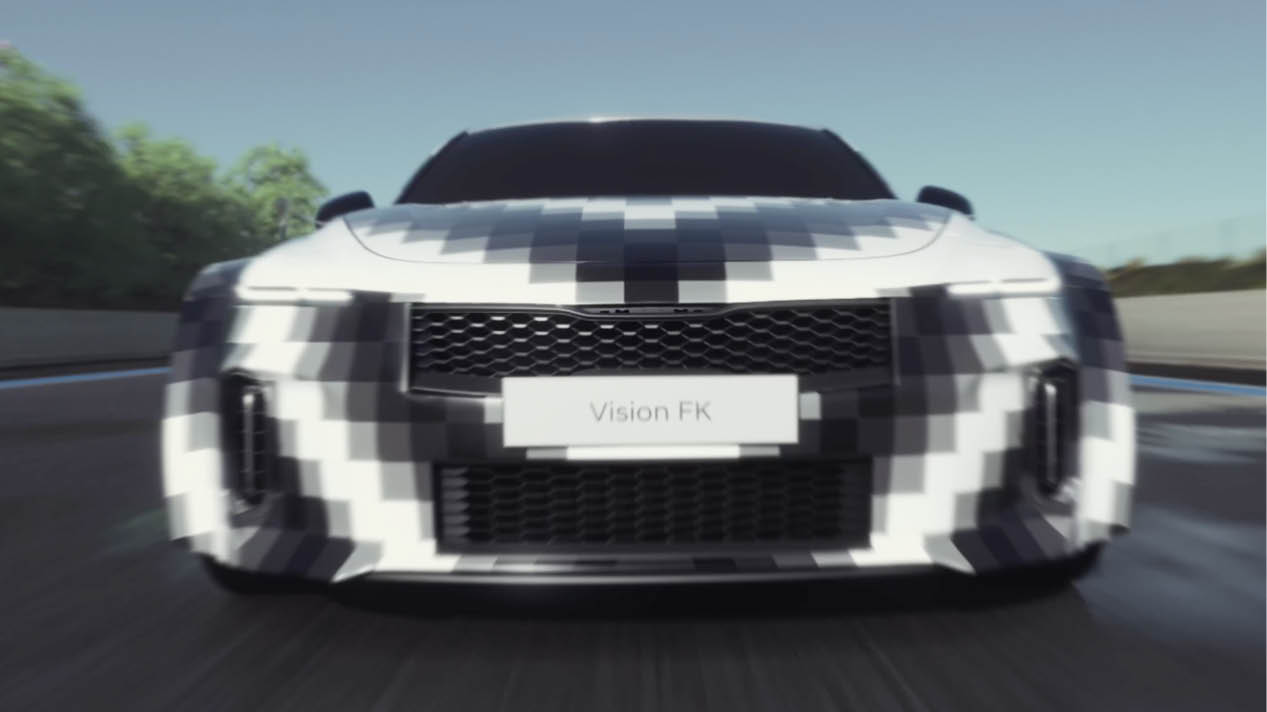
These facts clearly show that consumers want values other than high economy or efficiency in eco-friendly vehicles. In other words, they are looking for powerful performance in eco-friendly vehicles that can’t be experienced in conventional internal combustion engine vehicles.
It is for this reason that Hyundai Motor Group proactively developed the Vision FK, a new concept of high-performance, eco-friendly mobility. The Vision FK, a high-performance eco-friendly hydrogen fuel cell vehicle, has all the characteristics the future automobile market requires. The vehicle has combined a *PE system (Power Electric System) for electric vehicles with a hydrogen fuel cell system for the first time ever. In addition, it provides a foundation for future technological improvement by pre-verifying technologies to be introduced by Hyundai Motor Group for high-performance eco-friendly vehicles.
*PE system: An electric motor system that combines a motor and a speed reducer, an inverter for power conversion, and a battery containing a power source
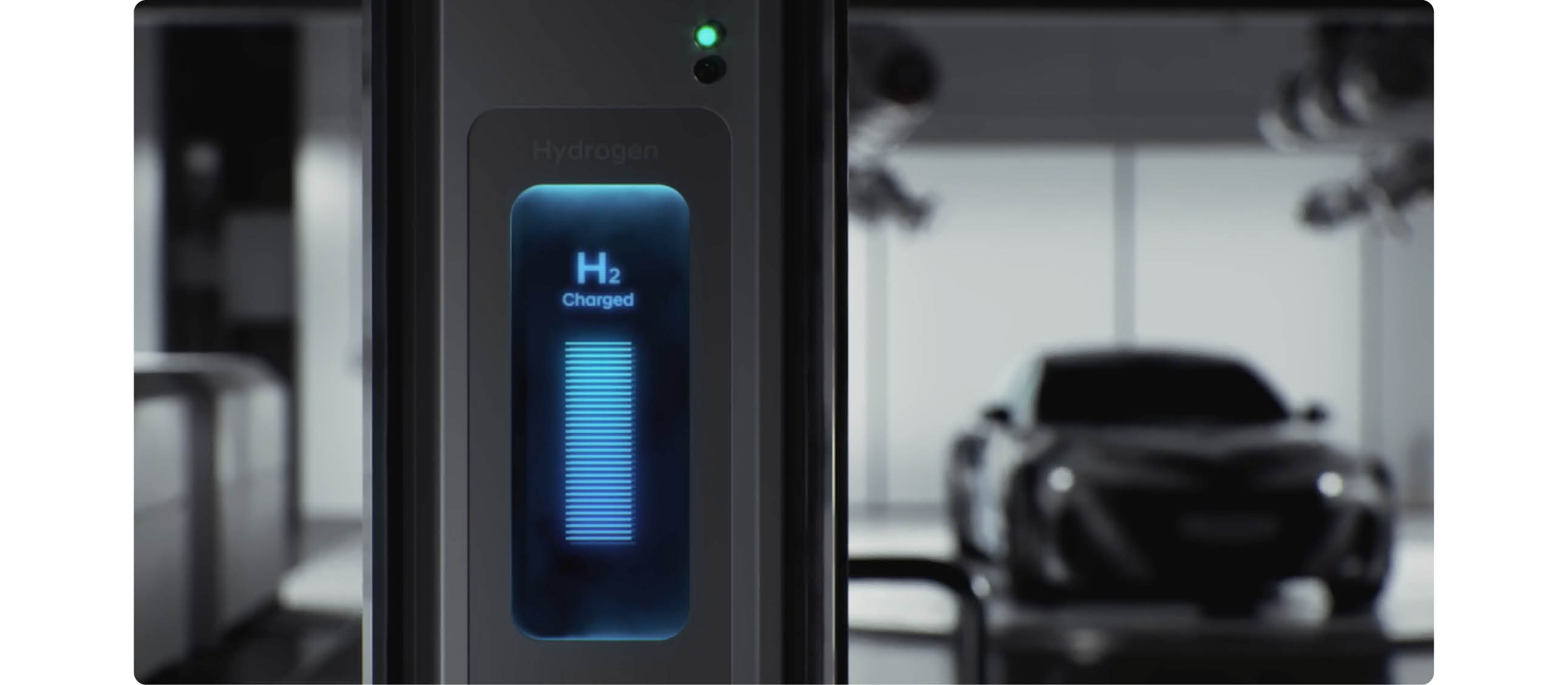
The key to the Vision FK is the combining of an eco-friendly hydrogen fuel cell system and a high-performance PE system into one. Hyundai Motor Group’s purpose for including a completely unique electric motor system in the Vision FK is clear. It is to dispel the prejudice that eco-friendly cars are inferior in performance and not fun to drive and that high-performance cars cause environmental pollution, and to make a car in which these two antinomies are compatible.
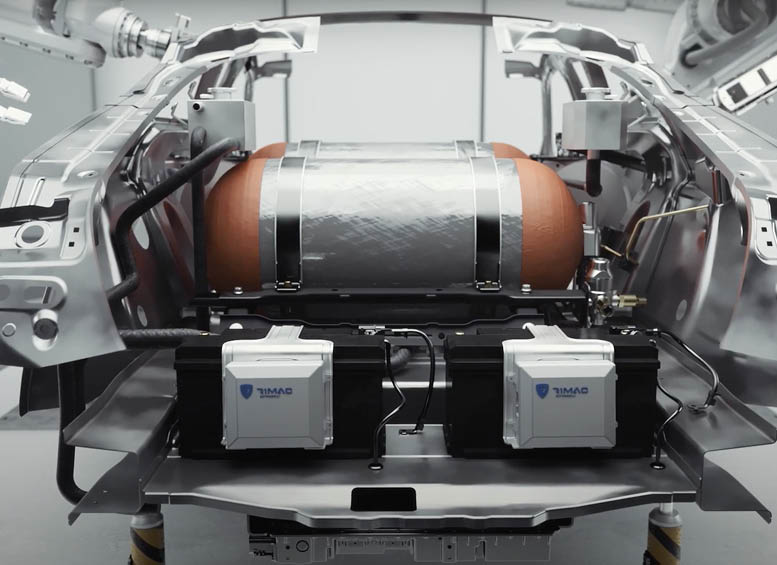
Hyundai Motor Group installed the best systems in each field on the Vision FK to achieve this. First, it uses the hydrogen fuel cell system of the NEXO, a hydrogen electric vehicle. NEXO’s hydrogen fuel cell system, which has already proven itself in performance and stability in markets around the world, maximizes efficiency as it is used as a basic power source when the Vision FK drives at low speeds or is maintaining and managing the battery charge. Two hydrogen fuel tanks with a capacity of 2 kg are mounted on the rear axle, and the second-generation fuel cell stack with an average output of 85 kW and a maximum output of 95 kW is mounted on the front axle to achieve this.
The most notable part, however, is the Vision FK’s high-performance PE system. This system helps the Vision FK to exert its power in high-speed driving or dynamic driving situations. Hyundai Motor Group has installed on the Vision FK a PE system developed in collaboration with Rimac Automobili, a Croatian high-performance hyper electric vehicle maker. Hyundai Motor Group invested about KRW 100 billion in Rimac Automobili in 2019, and agreed to mutually cooperate to develop high-performance electric vehicles.

The Vision FK’s PE system consists of two drive motors, a speed reducer, and an inverter. Unlike conventional electric vehicles in which one drive motor is applied to each of the front and rear drive shafts, the Vision FK connects two motors directly to the left and right rear wheels. The combined output of the two motors installed onto the rear wheels is very powerful with over 500 kW (about 680 horsepower). To put this into perspective, the combined output of two motors applied to the front and rear axles of the electric Porsche Taycan Turbo S is only 460 kW (about 625 horsepower). In addition, the driving battery with a capacity of more than 60 kWh is placed across the center and rear of the interior space in a T shape. This maximizes space utilization and completes a design with an optimized center of gravity.
Unlike battery packs installed in Hyundai Motor Group’s E-GMP, the platform dedicated to electric vehicles, Rimac’s battery pack consists of cylindrical cells. Although the energy density per volume is somewhat lower than that of the E-GMP battery pack, it has a faster charging and discharging speed, allowing it to produce a high output (580 kW) compared to the energy installed. For reference, the energy density of a battery indicates how much energy can be stored per certain volume, and the output is determined by how quickly the battery is charged and discharged.
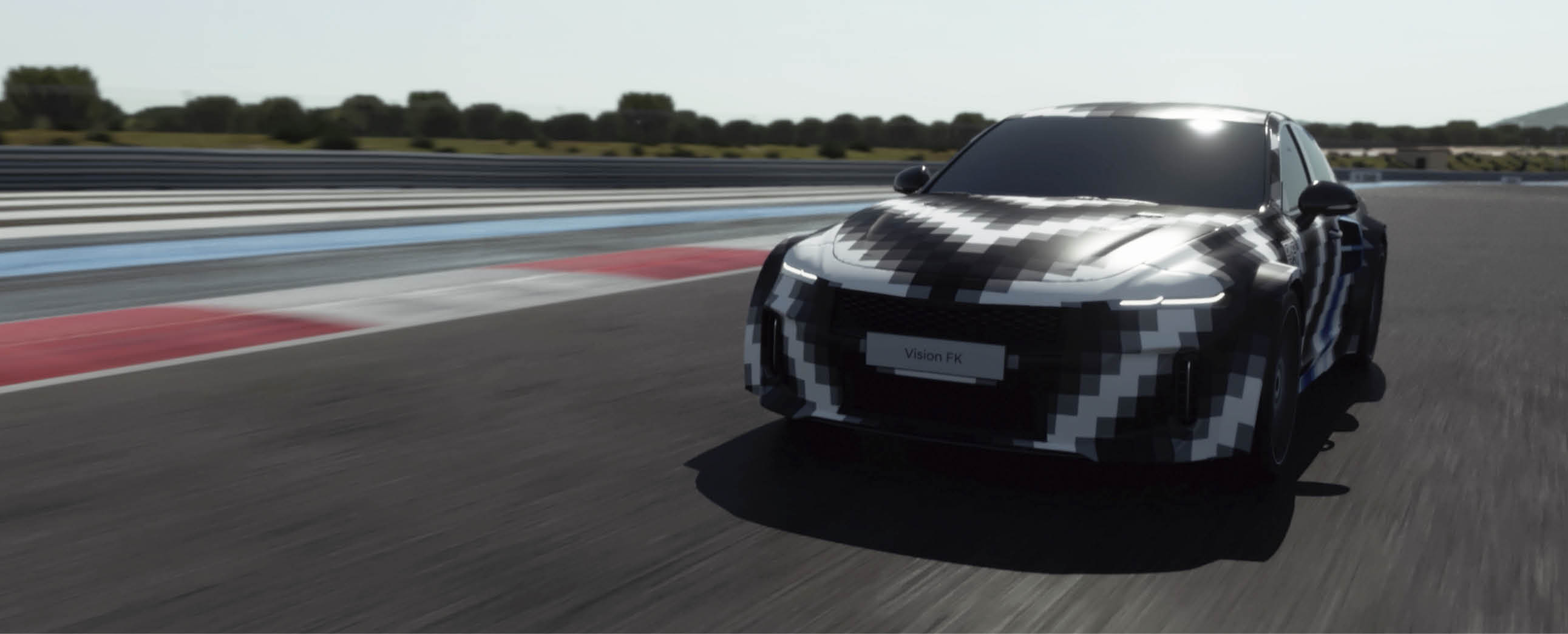
In the case of battery packs applied to the E-GMP, pouch-type cells are used to increase the energy density and can be applied to various electric vehicles through standardization and common design strategies. However, the Vision FK is the only high-performance, eco-friendly hydrogen fuel cell vehicle that does not use standardized and shared parts. It is also different from conventional electric vehicles in that it focuses more on high performance while maintaining the characteristics of eco-friendly vehicles. In addition, it is in a better position to boost performance thanks to the compact battery and water-cooled thermal management system that can cool the upper and lower parts of the battery cell at the same time. This is why the Vision FK uses a PE system and a high-performance battery system, both of which have been developed in collaboration with Rimac.
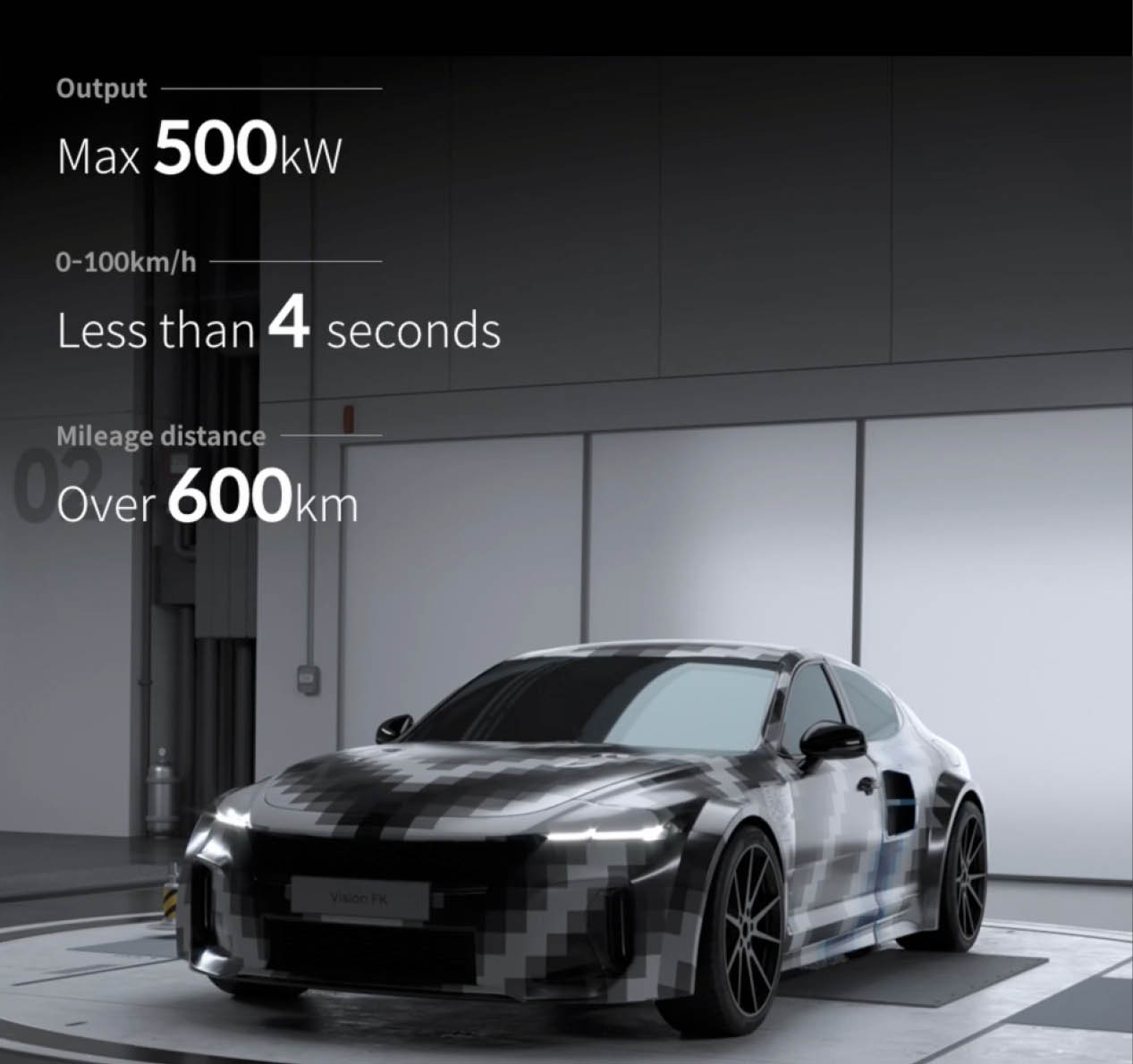
Thanks to the advanced design that combines the hydrogen fuel cell system and the PE system, the Vision FK boasts performance and efficiency that far exceed those of conventional high-performance electric sports cars and hybrid sports cars. The biggest advantage compared to the conventional electric sports car is that it’s equipped with a hydrogen fuel cell to reduce the charging time to about 5 minutes. In addition, it is possible to maintain the high-voltage battery charge level above a certain level at any time through hydrogen fuel cell power generation. The driving range on a single charge is also more than 600 km, which is far superior to conventional high-performance electric sports cars that have a maximum driving range of 500 to 600 km.
In a situation where high output is required, the power performance is improved by using the hydrogen fuel cell and the battery output at the same time. Thanks to this, the Vision FK can reach 100 km/h from standstill in 3.9 seconds and has a top speed of 260 km/h. Moreover, in terms of fuel efficiency and thermal management, it has an advantage compared to high-performance electric sports cars that use only a battery. It can improve the efficiency and maximum performance of the powertrain parts by distributing the power source to a hydrogen fuel cell and a battery.
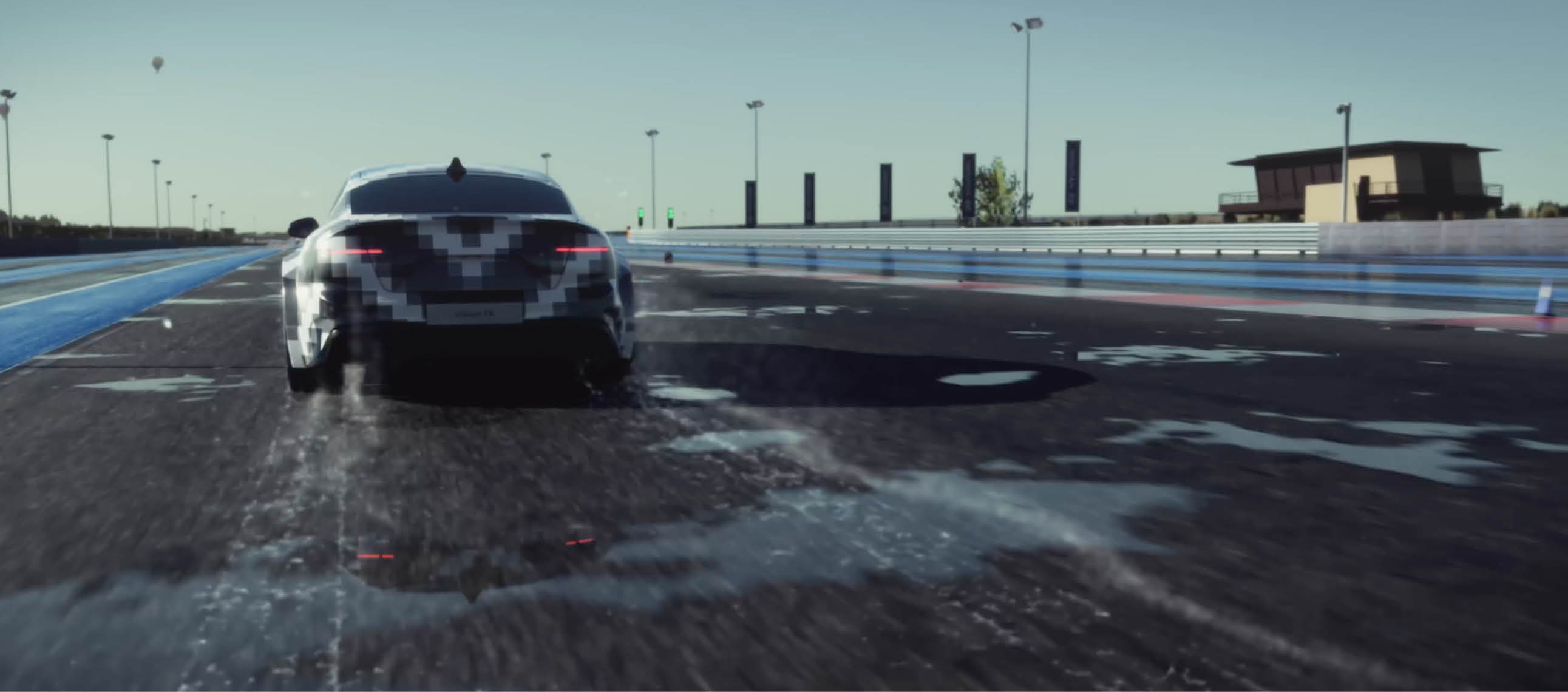
As we have seen so far, the Vision FK is the world’s first high-performance hydrogen fuel cell vehicle that combines a high-performance PE system with the most eco-friendly hydrogen fuel cell system. The Vision FK also serves as a rolling lab to test several new technologies through actual driving. The convergence of hydrogen fuel cell vehicle technology and electric vehicle technology verified through this is expected to lead Hyundai Motor Group’s high-performance eco-friendly vehicles and motor sports activities in the right direction going forward. The Vision FK certainly presents a new direction in the future mobility trends that place importance on eco-friendliness and the driver’s individuality.
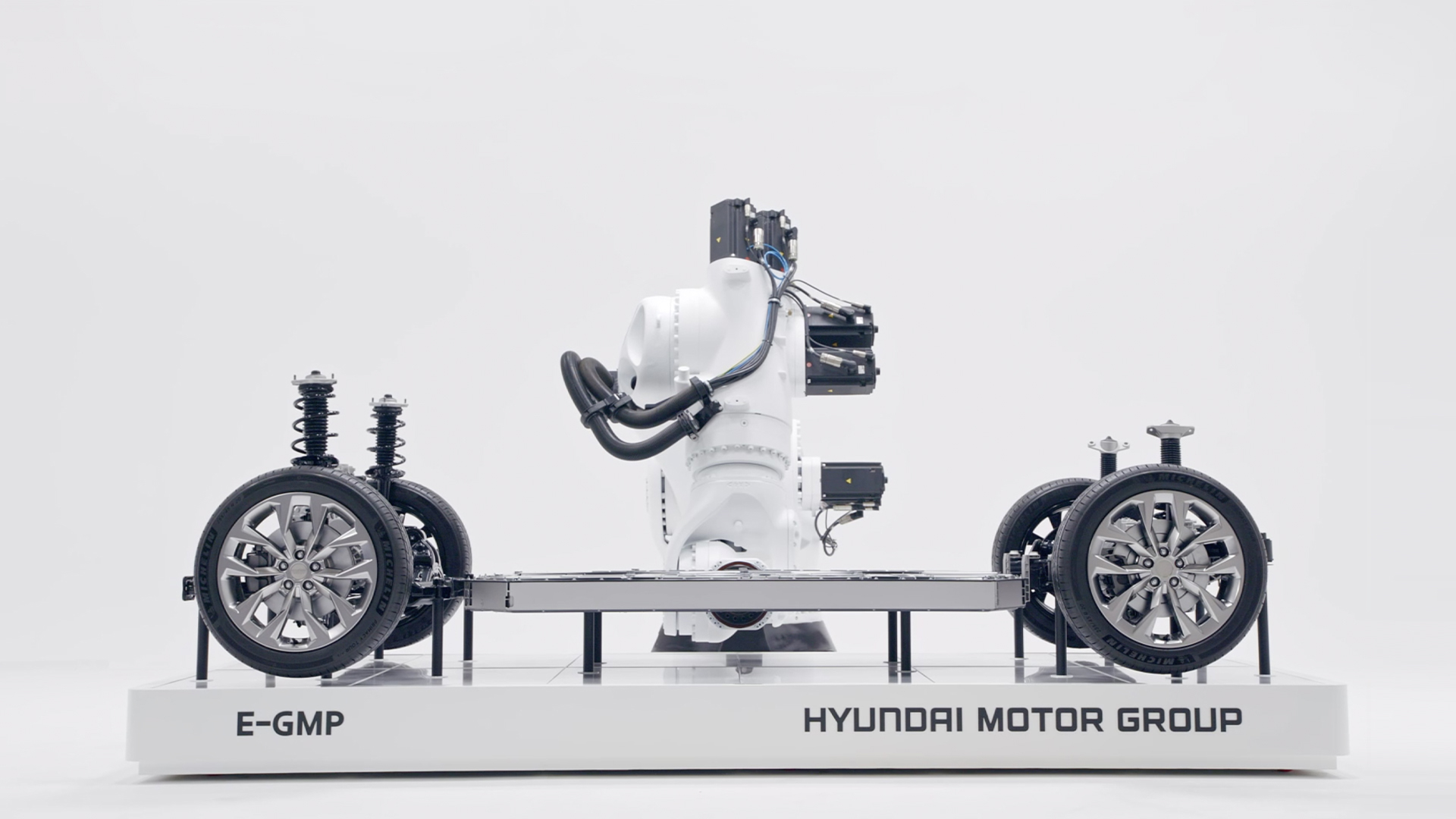
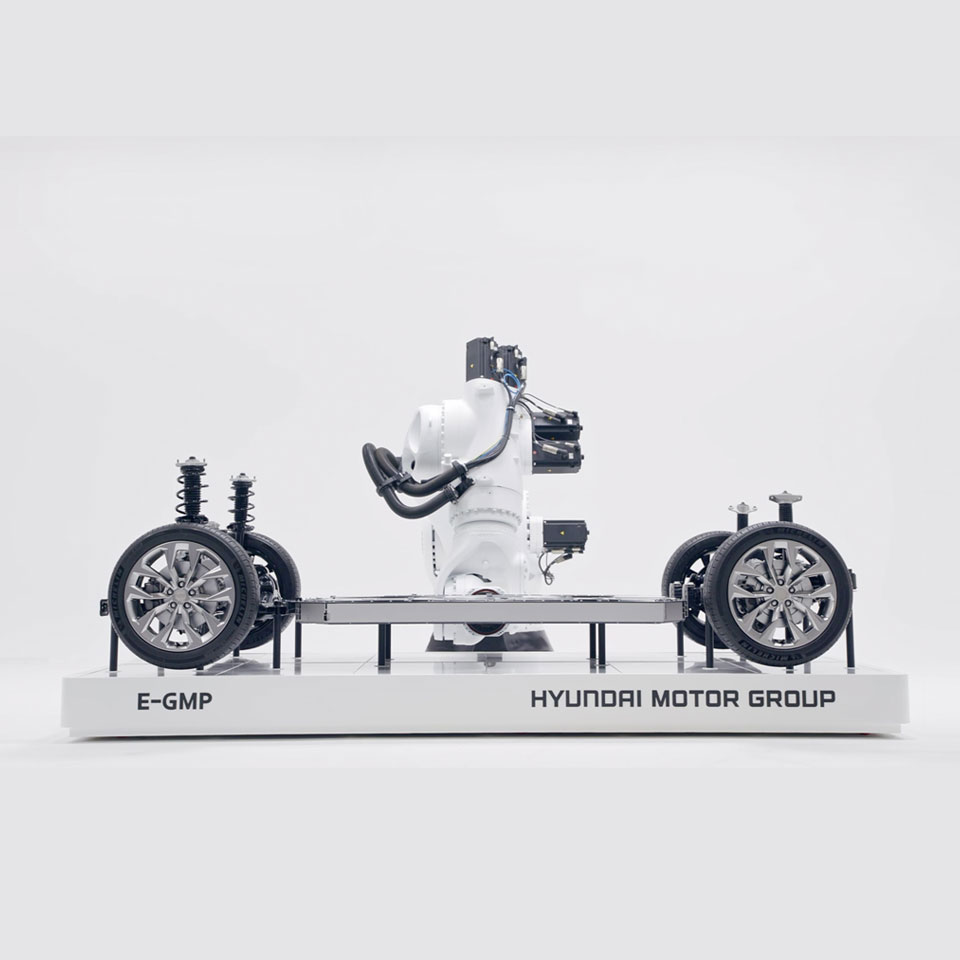
The Crux of Mobility’s Sustainable Future
2022.01.17 16min read